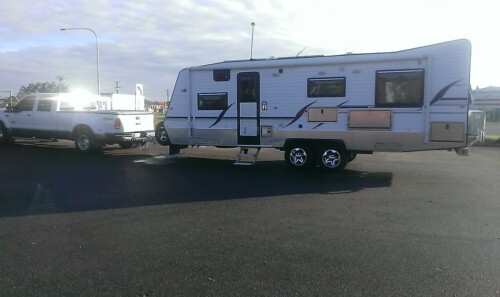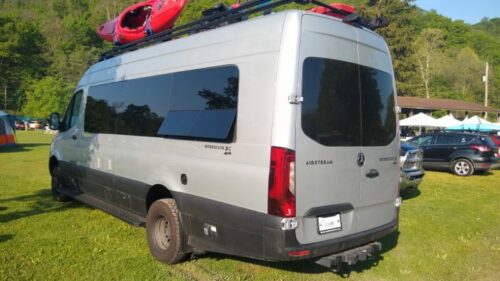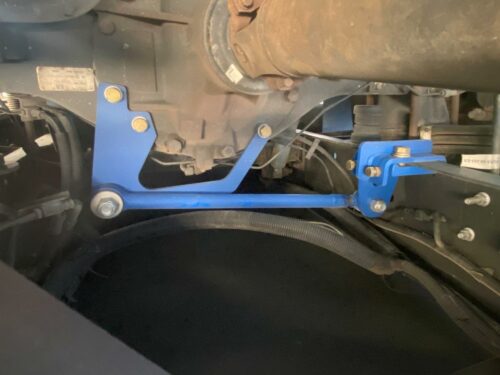You may affectionately refer to your RV as your “home on wheels,” but it doesn’t appreciate in value like a sticks n’ bricks dwelling. Like an automobile or a boat, an RV depreciates over time.
In other words, used RVs cost less than new RVs, and (with few exceptions), the older the RV, the less it’s worth.
As a buyer or seller of an RV, you need to understand RV depreciation. If you’re a buyer, it’s your key to knowing if you’re getting a fair shake. If you’re a seller, it’s your key to knowing if a customer is making a lowball offer.
This article dives deep into the how’s, what’s and why’s of RV depreciation. But here are three Rules of Thumb upfront:
- On average, an RV loses 15-30% of its value the moment it’s driven off the dealership lot.
- Most RVs are worth half what you paid in about 5-6 years.
- After 5 years, most RVs depreciate about 5% every year.
Within 15-20 years, most RVs will have almost depreciated to their scrap value. This aligns with the expectation that RVs will have an average lifespan on the road of 12-20 years.
Table of Contents

What Is Depreciation?
If you’re unfamiliar with depreciation, don’t worry! You’re actually very familiar with the concept; you might just not know the term. If you’ve ever hosted a garage sale or sold anything on Craigslist or Facebook Marketplace, you know how depreciation works.
Here’s how Investopedia defines depreciation:
Depreciation is an accounting method of allocating the cost of a tangible or physical asset over its useful life or life expectancy. Depreciation represents how much of an asset’s value has been used up.
In simple terms, depreciation is the loss of value over time. Most things depreciate. Very few things appreciate – that is, gain value over time. That’s why those things that do, like real estate and company stocks, are in such high demand.
If you’re a business owner, depreciation is part of tax law – and it gets really complicated! The IRS dictates that RVs used for business purposes be depreciated over a 5-year period. Most accountants would use the straight-line method to linearly reduce the value of the RV asset from its original cost to its salvage value.
However, RV depreciation for business is beyond the scope of this article. Instead, we’ll focus on how depreciation affects you as a RV private owner, either as a buyer or seller.
There are three numbers you should understand before we dive in.
- New Value: This is usually the purchase price or average new sale cost of the RV. It’s not the same thing as the MSRP, which is an inflated value suggested by the manufacturer to help dealers offer “discounts.”
- Salvage Value: This is the value of the RV at the end of its life. Normally, this is a few hundred to a few thousand dollars at most, similar to the price paid for a scrap vehicle at a junkyard.
- Depreciated Value: This is between the new and salvage value. This is “X,” the number you’re trying to find!

Why Do RVs Depreciate?
Recreational vehicles lose value for four main reasons:
- Mechanical wear and tear
- Defects and damages
- High mileage
- Reduced market value
Mechanical Wear and Tear
The rate of mechanical wear and tear varies greatly by model and manufacturer. A well-built and well-maintained luxury 5th wheel may experience very little wear and tear over its lifetime. However, a cheaply constructed stick n’ tin camper may start to disintegrate on its shakedown cruise!
This is one area where towables have an ace up their sleeve. A motorhome, no matter how well constructed, will break down. No engine can last forever. A high-quality towable RV, however, can stay in pristine condition for many decades.
Even towable RVs, however, should be carefully maintained, such as the following:
- Properly winterized
- New exterior seals
- Greased wheel bearings
There is no hard rule about which RVs will fall apart and which won’t. Unfortunately, the vast majority ff RVs built by major manufacturers won’t last past 15-20 years – and a bad leak could kill them off even earlier!
Defects and Damages
Defects and damage are the number one reason RVs lose value over time.
Just a single roof leak can halve the market value of an RV! Buying an RV with a history of leaking is like buying an automobile with a salvage title: It’s a gamble.
Types of significant damage includes:
- Any water leak
- Any fire
- Wall delamination or external damage
- Chassis or suspension failure
You can avoid most types of RV failure by carefully maintaining your exterior water seals, preventing frame rust, and storing your RV underneath a carport or in a garage.
Pay particular attention to the condition of the exterior. Many RV buyers will forgive dents and dings inside the vehicle. Very few will forgive scratches, bubbles or dents in the exterior.
High Mileage
Motorhomes track their mileage. Meanwhile, towable RVs don’t have odometers. So it’s often not possible to pinpoint how many miles an RV has traveled.
However, in any RV, mileage causes a breakdown of the structure. Joints split; copper wires stiffen; sealants crack; engines break down. As a rule, more miles shortens the lifespan of any RV.
However, mileage doesn’t determine the value of an RV in the same concrete way that mileage dictates the resale value of a passenger vehicle.
With newer RVs, low mileage is important. No one wants a 3-year-old Class A gasoline-powered motorhome with 150,000 miles on the odometer. Even though the RV is fairly new, since gasoline engines typically don’t last longer than 200,000 miles, the high mileage has drastically reduced the resale value of the vehicle.
However, as the RV gets older, mileage becomes less important. This is because very few RVs are worn down by pure use. Most succumb to damage caused by water leaks, rust or roofing failure long before the potential mileage has been exhausted. So a 15-year-old RV will likely sell for a similar price regardless of whether it has been driven 40,000 or 120,000 miles.
Market Value
Let’s divide market value into two subcategories: The Grass-Is-Greener effect and the Brand Reputation effect.
Grass Is Greener –
Here’s an example for depreciation due to the Grass-Is-Greener market value effect:
Your flat screen 1080p TV costs $699 when new, but now you’re selling it on Facebook marketplace two years later for $150. It still works like new, but the latest and greatest TVs with 4k definition have reduced its market value.
Depreciation due to market value exists in any industry with consumer innovations. Products that evolve rapidly from year to year, such as smartphones and fashion clothing, have sky high levels of depreciation! This year’s treasure is next year’s trash.
Conversely, products that are valued for their longevity, such as handcrafted fine furniture, retain their value.
RVs may not boast the same rate of product innovation as automobiles or smartphones, but they still evolve fast enough to cause a drop in market value simply due to age. New roofing materials, smoother suspensions, and better batteries all beckon customers to the latest models.


Brand Reputation –
The manufacturer and brand has a significant impact on depreciation.
Well-regarded brands like Grand Design, Airstream and Pleasure-Way tend to retain their value. In fact, Airstream estimates that 65% of all Airstreams are still on the road!
Brands with cult followings like Scamp or Casita also tend to depreciate at a slow rate. When everyone loves your product (and alternatives are slim), prices stay high.
Some lucky RV makes and models may even qualify as collectibles. Desirable vintage classics, like a 1960s Shasta travel trailer or Volkswagen bus, may even command a higher used price than when new!
Market scarcity also plays an important role. Saturated brands, like Coachmen or Starcraft, may not retain their value like a product from NuCamp, who tends to build in lower quantities and has less competition.
The average RV from a “big box” builder like Forest River or Heartland will depreciate much faster than a desirable cult classic or premium product.
How Fast Do RVs Depreciate?
There is no one-size-fits-all rule for how fast RVs lose value over time.
| Age (Years) | Average Depreciation - Added | Average Depreciation - Total | New at $50,000 | |
|---|---|---|---|---|
| 1 | 21 | 21 | $39,500 | |
| 2 | 9 | 30 | $35,000 | |
| 3 | 7 | 37 | $31,500 | |
| 4 | 6 | 43 | $28,500 | |
| 5 | 5 | 48 | $26,000 | |
| 6 | 5 | 53 | $23,500 | |
| 7 | 5 | 58 | $21,000 | |
| 8 | 5 | 63 | $18,500 | |
| 9 | 4 | 67 | $16,500 | |
| 10 | 4 | 71 | $14,500 | |
| 11 | 4 | 75 | $12,500 | |
| 12 | 4 | 79 | $10,500 | |
| 13 | 3 | 82 | $9,000 | |
| 14 | 3 | 85 | $7,500 | |
| 15 | 3 | 88 | $6,000 | |
| 16 | 3 | 91 | $4,500 | |
| 17 | 2 | 93 | $3,500 | |
| 18 | 1 | 94 | $3,000 | |
| 19 | 1 | 95 | $2,500 | |
| 20 | 0 | 95 | $2,500 |
Does RV Type Matter?
Yes, different types of RVs depreciate at different rates. Check out our table below.
We compiled this table by sampling different makes and models and comparing their estimated value at NADAGuides by J.D. Power.
As you can see, our research indicates that Class A coaches, pop-up campers, and travel trailers depreciate the fastest over a 5-year period.
Meanwhile, Class C and Class B motorhomes experienced the slowest levels of depreciation.
| RV Type | Year 1 | Year 3 | Year 5 | Year 10 |
|---|---|---|---|---|
| Class A | 23 | 43 | 65 | 77 |
| Class C | 15 | 27 | 53 | 71 |
| Class B | 18 | 32 | 49 | 66 |
| 5th Wheel | 22 | 38 | 50 | 68 |
| Travel Trailer | 20 | 40 | 52 | 78 |
| Pop-Up/Expandable | 22 | 39 | 75 | 85 |
Do Luxury Units Fare Better?
You might be interested to know that bespoke or luxury units don’t typically fare better than off-the-shelf RVs. Both depreciate at about the same rate. And this makes sense – just because you were willing to pay an additional $2,000 for a kitchen island doesn’t mean the open market will.
Certain “luxury” features do command a higher price tag, such as diesel engines, upgraded suspensions or aftermarket roofing solutions like RV Armor.
But most customized cosmetic features, like custom paint jobs, specialty faucets, designer upholstery, etc., have very little impact on resale value.
Does Size Matter?
It may sound counterintuitive, but the larger the RV, the faster it depreciates. Class A coaches depreciate faster than smaller, premium travel trailers.
Perhaps this is because the bigger the RV, the more there is to go wrong.
It could also be because there are fewer buyers able to afford an $80,000 used Class A coach, and without competition among buyers, the resale price is driven down.
However, this effect is not seen amongst all brands and all types. It is a general trend, not a written rule. So don’t discount a larger RV simply because it may depreciate faster than a smaller one.
Does the Market Fluctuate?
There is some empirical evidence – and certainly anecdotal knowledge – that the depreciation rate and resale value of used RVs will vary by market conditions.
In 2020 and 2021, for instance, prices for lightly used RVs have gone through the roof. COVID-19 drove a nationwide craze for outdoor living and social distance travel. Meanwhile, global supply shortages disrupted RV manufacturing. The resulting scarcity drove up resale values, for some campers, close to MSRP!
The RV market is somewhat tied to the automotive market as well. As passenger vehicles become smaller and more fuel efficient, RVs must become smaller and lightweight to follow suit. If RV manufacturers don’t build enough lightweight units to satisfy demand, their depreciation will decrease and their resale values will rise.

Why Does RV Depreciation Matter?
Depreciation and RV Financing
Let us consider the following situation.
You purchased a $30,000 new RV with a 10-year financed loan at 5% interest. Pulling from the amortization schedule, at the end of Year 3, you still owe $22,513.
If your RV depreciates at an average rate, then it loses 15% the first year and 10% the two years thereafter. So it’s depreciated value is now $20,655.
Unfortunately, you now owe more on the RV than what it’s worth!
Sadly, this is not an uncommon situation. You should carefully consider any RV loan term beyond 10 years.
Depreciation and Warranty Coverage
It’s tempting to say to yourself, “Why would I purchase a new RV when I could purchase a barely used RV for 30% less?”
Well, the RV manufacturers are one step ahead of you.
RVs have an extremely high warranty claim rate. In fact, it’s not uncommon for RV manufacturers to process more warranty claims than they produce RVs!
Many of these claims are processed at the dealer level before the vehicle sale. But many aren’t caught until the customer has “broken in” the RV during the first year.
For this reason, most RV manufacturers offer 1, 2, or sometimes 3-year warranties (or often split warranties, like a 1-year overall/3-year structural policy). When you purchase a new RV, you are protected by this factory warranty at no extra charge.
However, if you purchase a used RV, you aren’t protected (and many manufacturers don’t allow the warranty to be transferred). Your only options are to go without service coverage and do it yourself or to purchase an aftermarket “extended warranty” (more accurately called a service contract), which typically costs several thousand dollars – and doesn’t cover nearly as much as you’d think!
Depreciation and Repair Costs
If you’re looking to purchase a used RV, you want the most affordable cost of ownership: A reasonable upfront purchase price balanced with low maintenance and repair costs.
Buying a brand new or 20-year-old camper generally violates this rule. One has a massive upfront cost; the other has exorbitant repair bills.
As a rule, the sweet spot for purchasing a used RV is 2-7 years of age.
Any newer, and you’re purchasing an RV when the depreciation curve is steepest and the unit’s mechanical reliability has not been tested. What if it’s a lemon?
Any older, and the chance of a major breakdown begins to rise exponentially.
Depreciation and Calculating a Fair Market Value
If you are purchasing a used RV, you can leverage the power of depreciation to calculate a fair market value for the transaction.
We wrote a whole article about it here: Fair Market Value – Changing Gears.
Here’s something else you should know: Most RV owners rely on NADA Guides for a used value estimation. Here’s what NADA has to say about depreciation:
NADAguides does not use a depreciation schedule to determine the value of used vehicles. We use auction data, retail data, asking price data, as well as macro- and micro- economic factors and judgment among other things in an attempt to depict the used vehicle market.

How to Reduce RV Depreciation
Now that you know the unfortunate truth about RV depreciation, you can take steps to lessen the losses.
Here are four easy ways to reduce depreciation and maintain the resale value of your RV.
1 Keep maintenance records
Keep a journal or log showing the service type, what month and year performed, at what mileage, at what cost, and who performed the service. Save every receipt. You can show this maintenance record to a seller in the future to prove its value.
And this almost goes without saying, but make sure you have the title! Replacing a lost or stolen title as a buyer is a nightmare in most states. Many buyers won’t even consider an RV without a title, so keep it secret, and keep it safe!
2 Store your RV in a protected place
24/7 exposure to the elements will wear out your RV faster than anything else. Storing your RV beneath a carport, even one without sides, can double the lifespan of your recreational vehicle. An enclosed space is even better; a ventilated and/or conditioned interior space is perfect.
Storing your RV in a protected place reduces wear and tear from the weather and reduces the risk of insect or rodent infestations.
And before you ask, no, a tarp does not count as protection! In fact, a tarp over the roof of your RV can be worse than nothing at all!
3 Update the technology
No RV, no matter how spotless, will fetch much money on the open market without modern appliances and technology.
Replacing outdated appliances with their modern counterparts, like a brand new convection microwave oven or ultra-efficient DC refrigerator, can significantly increase the value of your RV.
Popular RV tech upgrades include:
- Adding a solar power system
- Upgrading the battery bank
- Installing a power awning
- Replacing carpet with laminate or vinyl flooring
- Using a residential-style mattress with an airflow system
4 Rent out your RV
This is a cheat. Technically, renting out your RV doesn’t change the steep rate of depreciation. But it can put a lot of money in your pocket, offsetting the lost value caused by the passage of time.
And best of all, new RVs – the ones most subject to depreciation – are the ones that can bring in the most money!
To learn more about renting out your RV, read our guide here.
Investment or Golden Ticket?
Perhaps the best way to regard RV depreciation is the same way you regard a dog:
No one buys a dog thinking the dog will eventually pay for itself (trust me, it won’t). A dog, or any pet, costs money. But what you get out of it is unconditional affection and companionship.
With rare exceptions, buying an RV isn’t a growth investment. It’s a purchase, an expense. It’s a ticket to a nomadic lifestyle and magical weekends. The memories foot the bill.
.
Andy Herrick is a blogging nerd, #8 Enneagram, wannabe bread baker, INTJ, RV industry professional, and small business entrepreneur. He can be found hanging out with his lovely wife and family, skiing, cycling, climbing, hiking, and convincing anyone who will listen why dogs aren’t really that great of pets. Also, he runs this website.









